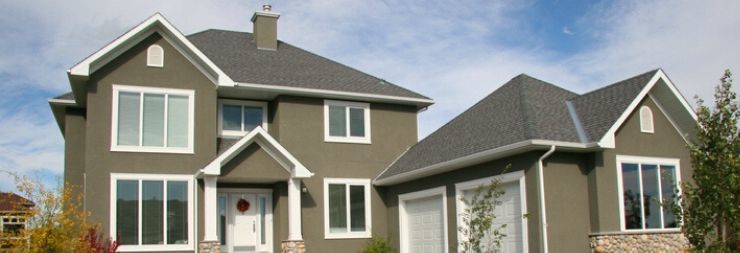When you’re home, you want to be comfortable. After all, it’s where you seek refuge from the stress and demands of everyday life. Maybe you like to unwind after a long day by relaxing in your upstairs bedroom — but notice the temperature often gets uncomfortable. You might be wondering, why is my house hotter upstairs than downstairs? What’s causing this? And is there anything I can do to fix it?
Uneven Heating and Cooling in Two-Story Homes
If you’re experiencing uneven cooling and heating in your two-story home, it can be frustrating. No matter what temperature you set on your thermostat, you can’t help but notice a palpable difference between the upstairs and downstairs rooms of your home. While this is a common problem for people living in two-story homes, the good news is that it can be fixed! And the first step to fixing a problem, is to understand what’s causing it in the first place.
Reasons Why the Second Floor of Your House is Hotter
The Physics of Air
When it comes down to why the second floor is hotter than the rest of your home — simple physics are largely to blame. Because hot air rises, while cold air sinks, the second floor is prone to warmer temperatures than the first. So naturally, the more stories your home has, the more challenging it will be to keep a consistent temperature throughout every level.
Hot Roof
As Floridians, we know all too well how hot, bright, and powerful the sun can be. Unless you have a lot of shady trees nearby, your roof is getting hit hard with direct sunlight. As a result, the heat from the sunlight gets absorbed into your roof and pushes into your attic and second floor — making it difficult for your AC to cool.
Old Ductwork
Ducts have the important job of distributing the cool air from your system throughout your home. Without properly maintained ducts, system and comfort issues will arise. Is your AC receiving regular maintenance? Do you remember when your ductwork was last replaced? Ductwork that is not maintained or is 10+ years old is susceptible to tears and leaks. Leaky ductwork decreases AC efficiency and results in uneven temperatures throughout your home.
How to Cool the Second Floor
While it may feel like some of the reasons for a hot second floor beyond your control, there are actually many things you can do to improve temperature consistency throughout your home.
1. Install a New AC system
Is the temperature in your home not cooling to what’s set on your thermostat? This could be because your AC is too small for your home. An AC that’s not properly sized for your home won’t cool your home like it should. If this is the case, we can help you invest in the right size AC for your home.
Related: 3 Signs of an Undersized AC Unit
2. Get Your Ductwork Replaced and Insulated
If you’ve had your AC for years and the uneven temperatures are recent, it could signify a problem with your ductwork. Ductwork is made out of malleable material that can deteriorate with regular wear and tear. If your ductwork is 10 years or older, it should be inspected for leaks. Depending on the severity of any leakage, your ducts will need to be either repaired or replaced. Adding ductwork insulation can also help ensure consistent temperatures throughout your home. Learn more about the benefits of ductwork insulation.
3. Keep Air Vents Open and Unobstructed
If it’s warmer on your second floor, it could be that your air vents are closed or obstructed. When supply vents are shut, return vents try to take in air from elsewhere, which causes inconsistent temperatures. Make sure that nothing is blocking the supply and return vents, like furniture or curtains.
4. Invest in a Zone Control System
One of the best ways to ensure a consistent temperature throughout a two-story home is to invest in a zone control system. A zone control system divides your home into multiple cooling zones. For example, if you have a two-story home, you can set zones to cool the upstairs and downstairs.
5. Install a Dehumidifier Upstairs
When it comes to Florida’s heat and humidity, you can’t really have one without the other. If it’s hotter upstairs, chances are it’s more humid too. Investing in a dehumidifier is a cost-effective way to manage upstairs heat and humidity and restore comfort to your home.
6. Adjust the fan setting on your thermostat from “Auto” to “On”
Take a look at your thermostat. Is the fan setting on “Auto”? If so, switch the fan setting to “On.” Adjusting the fan setting to “On” will continually circulate the air in your home and can help prevent uneven temperatures. While this is known to increase your energy bill slightly, it’s not significant and can help maintain a consistent temperature throughout your home.
Related: What is AC Fan Mode?
AC Service in Brevard County
At Colman Air, we understand that sometimes AC issues can be uncomfortable and inconvenient. That’s why we have a 24/7 AC emergency line. Call us if you need assistance ASAP, or to schedule routine HVAC maintenance.
24-HR Emergency Service: (321) 269-4565







Leave a Reply